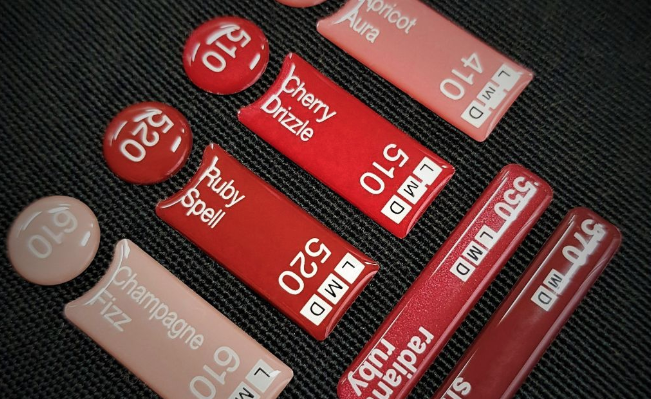There are many ways that information and designs can be transferred onto a metal nameplate, each with its own benefits and features.
Sometimes it can be hard to tell what the differences are, and unless you are in the industry, it is unlikely that you know how anodising, etching and embossing differ from each other. Both embossing and etching create a 3D design on the surface of the metal, whereas printing/anodising is a 2D method, however, they all create results vastly unlike each other.Let’s take a look at the differences and help you to decide which metal marking method is the best for your nameplate needs.
Printing and Anodising

The process of printing and anodising involves sealing the nameplate design into the metal, resulting in a durable and long-lasting finish that is also cost-effective. This finish is commonly applied to serial and rating plates, but can also effectively showcase your brand on the nameplate. While black is the most commonly used colour for this type of nameplate, other colours are available through the anodising process. By incorporating different colours, specific elements of the nameplate, like a logo or company name, can be highlighted.
Read our blog and watch our recent video where we explain anodising metal nameplates in more detail.
Embossing

Embossing is a process that changes the physical shape of the metal. The most common way to emboss a metal nameplate is to use an embossing tool in a hydraulic press. The hydraulic press then presses the tool into the back of the metal nameplate which raises the front surface. This is what gives the 3D effect to the area that has been embossed or raised. Embossing allows you to keep the metal at the same thickness throughout the finished product, as the shape is physically changed rather than the thickness altered.
A gloss finish metal is usually used when embossing because it’s the light reflecting from the embossed area which gives the 3D effect. This is why it’s always recommended to keep the embossed (raised) area a gloss metal colour while the rest of the nameplate is coloured.
Read our blog and watch our recent video on the key characteristics of metal nameplates here.
Etching

Etching metal has been used as an art form for centuries. It is believed to have originated during the middle ages, but its roots may extend even further back. The process involves treating the metal surface with chemicals, typically acid, to create an impression. The metal is first coated with a protective layer in areas that will not be etched. The desired areas are then eroded to leave a recessed surface. The etched surface can be left in its natural metal colour or dyed to achieve the desired effect. Two common techniques used on metal nameplates are etching the text or detail while leaving the background untouched, or etching the background while leaving the text or detail intact.
Etching produces a highly decorative nameplate that suits being applied to a wide range of products, from point-of-sale displays to vehicle interiors.
The above three processes may seem exclusive; however, they can be used in combination with each other to create endless possibilities of designs to please the eye. For example, printing and embossing can be combined to create colourful 3D designs that demand attention.
With over 50 years in the business, contact LNI today for advice on how to best convey your designs onto metal.





